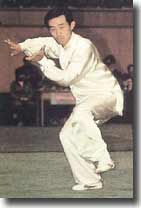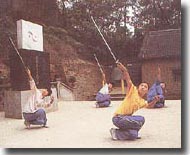Ottawa
Chinese Martial Arts

| Home | ||||
| About Us | ||||
| Overview | ||||
| Shaolin | ||||
| Hsing Yi | ||||
| Tai Chi | ||||
| History | ||||
| Philosophy | ||||
| 24 Form | ||||
| References | ||||
| Bagua | ||||
| Baji | ||||
| Health | ||||
| Other Styles | ||||
|
|
||||
| Links | ||||
| Directory | ||||
| News | ||||
n general, T'ai Chi is classified as an internal style. This means that the student should learn about "feeling" the movement before focusing on external power generation. This type of training can be directly compared to basic Shaolin training - initially, it seems physically strenuous until students understand how to use the mind to guide their movements. This does not mean that there is no external training in T'ai Chi or that there is less internal training in Shaolin. The difference is a matter of degree and emphasis.
T'ai Chi training involves:
- Push hand exercises - including one-hand, two-hand, stationary and moving pushing hands.
- Two man fighting forms.
- Auxiliary exercises - suggested use of props such as rulers or balls to improve sensitivity.
- Tai chi weapons - sword, sabre, fan and staff
Copyright 2003
Last
update: 03/29/2002

